Abstract
The joint evolution of female mating preferences and secondary sexual characters of males is modeled for polygamous species in which males provide only genetic material to the next generation and females have many potential mates to choose among. Despite stabilizing natural selection on males, various types of mating preferences may create a runaway process in which the outcome of phenotypic evolution depends critically on the genetic variation parameters and initial conditions of a population. Even in the absence of genetic instability, rapid evolution can result from an interaction of natural and sexual selection with random genetic drift along lines of equilibria. The models elucidate genetic mechanisms that can initiate or contribute to rapid speciation by sexual isolation and divergence of secondary sexual characters.
Keywords: mating preferences, sexual dimorphism, genetic correlation, runaway process
Full text
PDF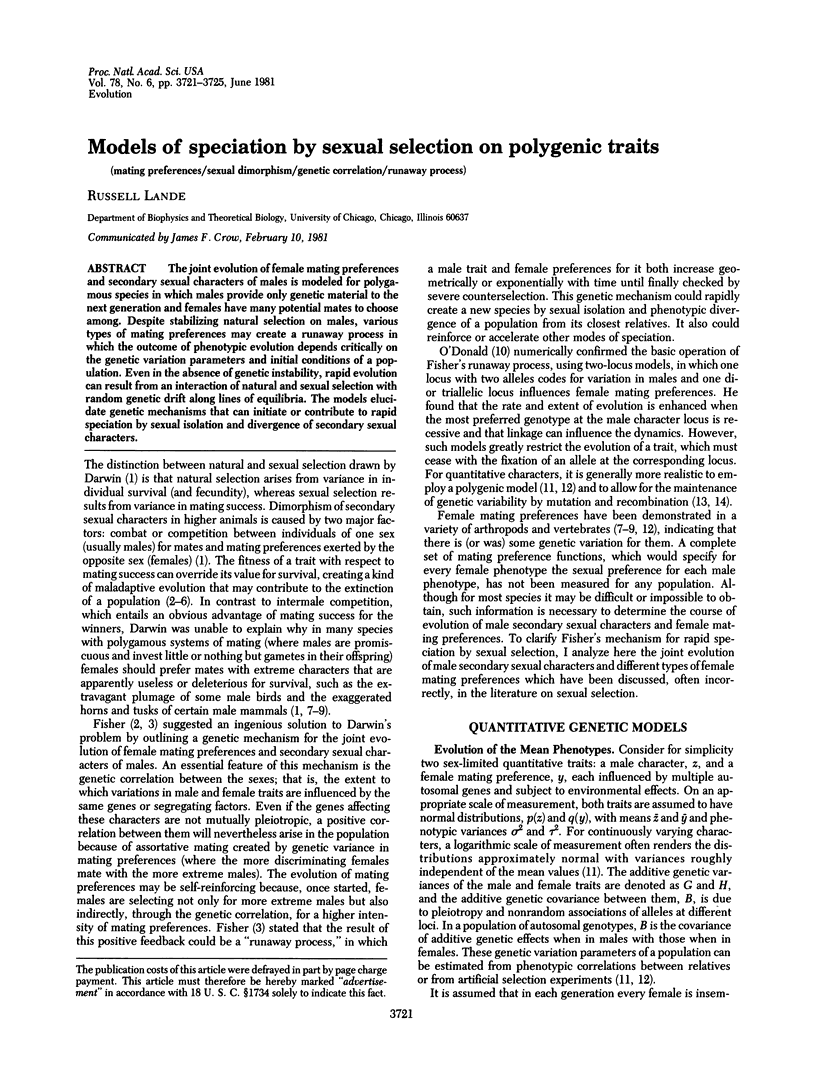
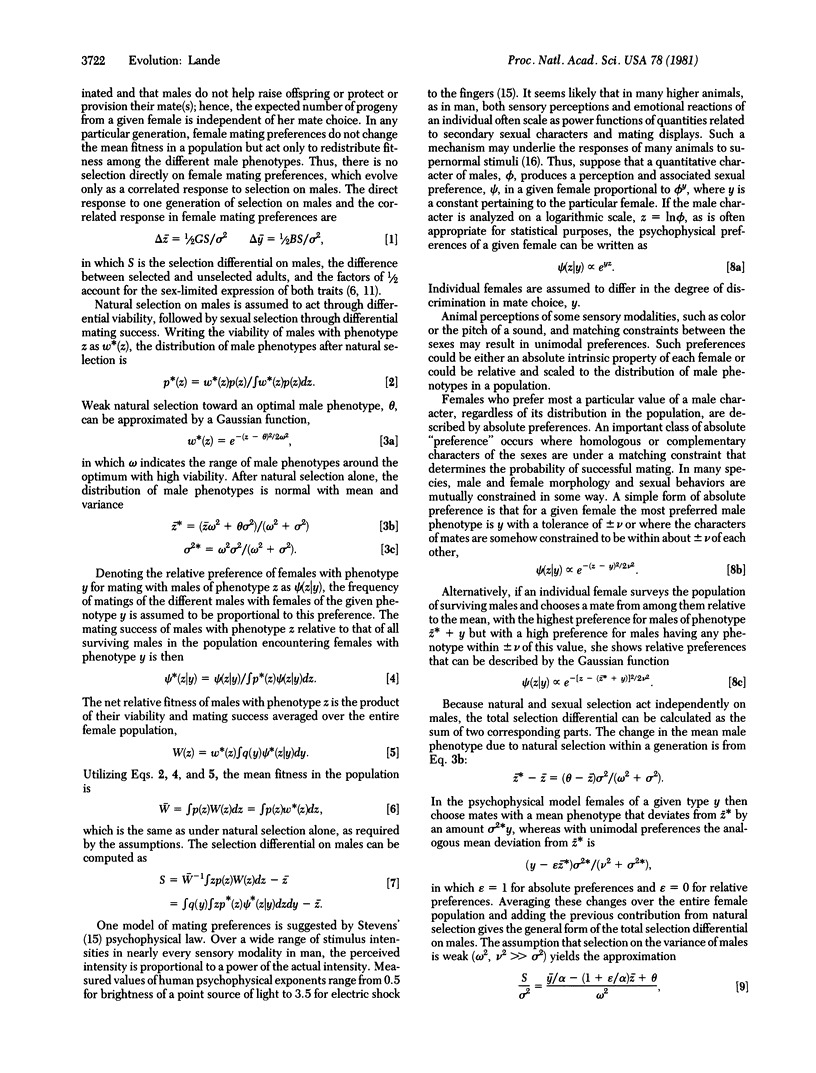
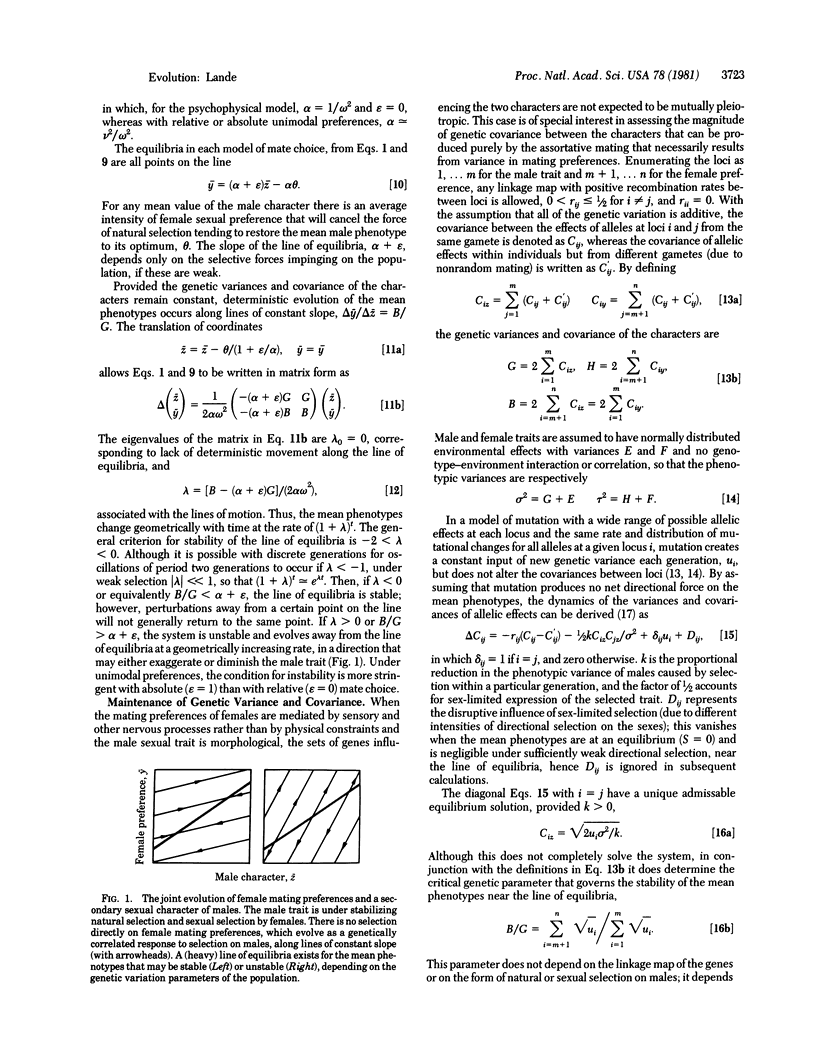
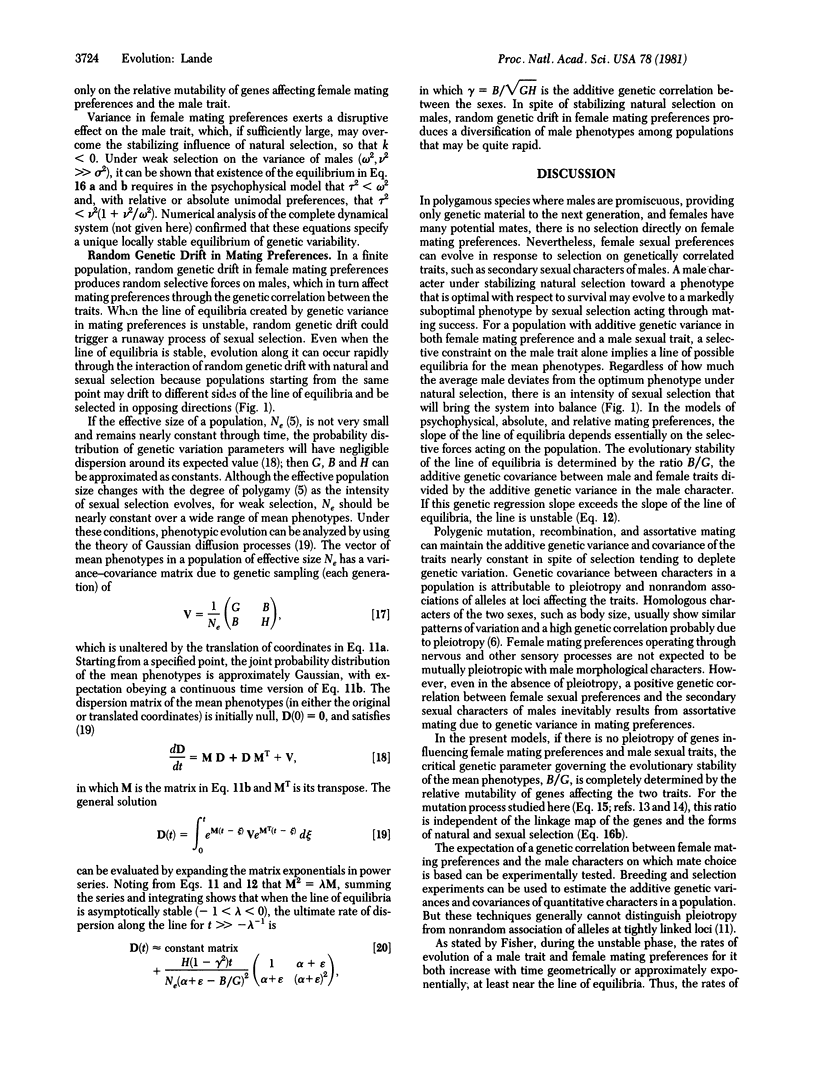
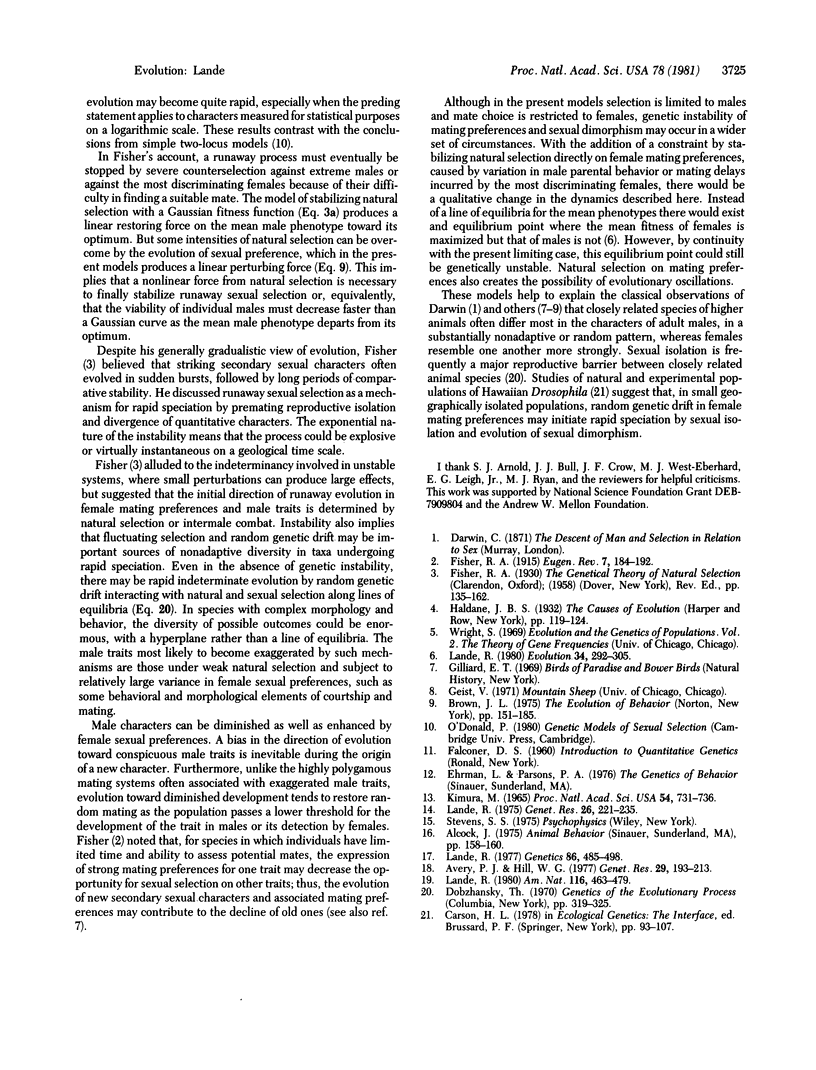
Selected References
These references are in PubMed. This may not be the complete list of references from this article.
- Avery P. J., Hill W. G. Variability in genetic parameters among small populations. Genet Res. 1977 Jun;29(3):193–213. doi: 10.1017/s0016672300017286. [DOI] [PubMed] [Google Scholar]
- Kimura M. A stochastic model concerning the maintenance of genetic variability in quantitative characters. Proc Natl Acad Sci U S A. 1965 Sep;54(3):731–736. doi: 10.1073/pnas.54.3.731. [DOI] [PMC free article] [PubMed] [Google Scholar]
- Lande R. The influence of the mating system on the maintenance of genetic variability in polygenic characters. Genetics. 1977 Jun;86(2 Pt 1):485–498. [PMC free article] [PubMed] [Google Scholar]
- Lande R. The maintenance of genetic variability by mutation in a polygenic character with linked loci. Genet Res. 1975 Dec;26(3):221–235. doi: 10.1017/s0016672300016037. [DOI] [PubMed] [Google Scholar]


